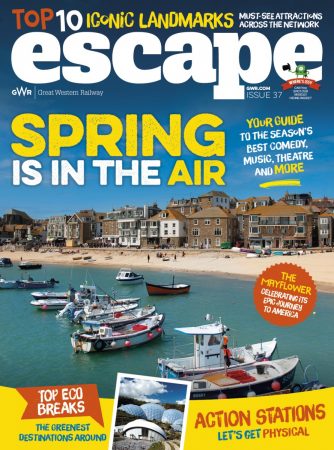
Twitching by train: spot birds of prey and more
If you’re taking a trip by train over the coming colder months, why not try a bit of birdwatching from the comfort of your carriage? Here are some surprising species that you might spot along the GWR network.
Red kites around Reading
These handsome raptors were once persecuted to the brink of extinction in Britain, but have been reintroduced to their former haunts, including The Chilterns where they are now thriving. Keep an eye out for these flame-feathered phoenixes anywhere along the London mainline from Didcot Parkway to Slough, but they’re especially plentiful either side of Reading. Look for large birds of prey (sometimes several strong in winter) cruising on long, narrow wings and with distinctive forked tails.
Chance of seeing birds: Good.
Other birds of prey to spot: buzzards (with shorter, but broader wings and fan-shaped tails) and much-smaller kestrels (watch for birds hovering above grassy verges).
Wildfowl and waders in the West
The Avocet Line runs for almost ten miles along the eastern edge of Devon’s Exe estuary, between Exeter St. David’s and Exmouth. The estuary is an internationally important area for overwintering wading birds and wildfowl. Tens of thousands of birds visit during the colder months for the abundant food – it’s said that a cubic metre of Exe mud contains the same number of calories as 14 Mars bars! From the station stop at Topsham, all along the line to the coast, look for long-legged godwits, charcoal-coloured brent geese and the eponymous avocet – a striking black and white wader that’s well-known to birdwatchers as the emblem of the RSPB.
Chance of seeing birds: Excellent (but tricky to identify individual species).
Other places to see them: The Riviera Line follows the west side of the estuary between Exeter and Teignmouth and offers many of the same species. The best section for birdwatching is between Exeter and Starcross.
Cranes in the Somerset Countryside
Cross your fingers and scan the landscape between Taunton and Castle Cary and you might see a bird that was absent from the Westcountry for 400 years. Almost 100 common cranes – a species hunted to extinction and lost from the region for centuries – were released and returned to the Somerset Levels between 2010 and 2015. In winter, these huge, grey birds gather together in family groups known as ‘sedges’ and can – with a generous slice of luck – be spotted feeding in flooded fields or flying, in classic ‘V’ formation with necks outstretched, across the mist-covered moors.
Chance of seeing birds: Low (but you never know!)
Other wetland birds to spot: Similar, but smaller, grey herons and bright white little egrets (both fly with necks tucked in).




